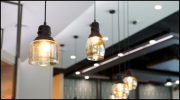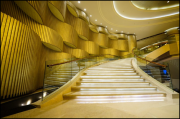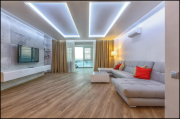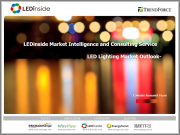
|
시장보고서
상품코드
1809789
조명기구 시장 : 기구 유형, 기술, 설치, 용도, 유통 채널별 - 세계 예측(2025-2030년)Lighting Fixture Market by Fixture Type, Technology, Installation, Application, Distribution Channel - Global Forecast 2025-2030 |
||||||
조명기구 시장은 2024년에는 1,066억 1,000만 달러로 평가되었으며, 2025년에는 CAGR 5.64%로 1,124억 9,000만 달러로 성장하여 2030년에는 1,482억 6,000만 달러에 달할 것으로 예측됩니다.
| 주요 시장 통계 | |
|---|---|
| 기준 연도 2024년 | 1,066억 1,000만 달러 |
| 추정 연도 2025년 | 1,124억 9,000만 달러 |
| 예측 연도 2030년 | 1,482억 6,000만 달러 |
| CAGR(%) | 5.64% |
핵심 동향, 기술 혁신, 업계 진화를 촉진하는 새로운 움직임을 밝혀 조명기구 업계 상황을 조명합니다.
조명기구 산업은 기술적 비약적 발전, 규제 프레임워크의 변화, 소비자 취향의 진화로 인해 급격한 변화의 기로에 서 있습니다. 디지털 제어 시스템, 에너지 효율이 높은 광원, 스마트홈 애플리케이션이 점점 더 많은 추진력을 얻으면서 조명 설계 및 조달의 전통적인 패러다임이 뒤집어지고 있습니다. 이 소개는 전례 없는 변화에 시장이 어떻게 대응하고 있는지를 종합적으로 살펴볼 수 있는 토대를 마련합니다.
지속가능성, 디지털 통합, 소비자 중심 디자인이 시장 기반을 재정의하는 가운데, 조명기구 산업의 변혁적 변화를 포착합니다.
지속가능성은 조명기구 분야의 중심축으로 등장하여 제품 개발 및 조달 결정을 주도하고 있습니다. 각 제조사들은 친환경 소재, 순환형 디자인 원칙, 환경에 대한 책임의식을 반영하는 인증제도를 우선시하고 있습니다. 이러한 변화는 전 세계 규제기관의 에너지 효율 기준 강화에 따른 것으로, 업계는 기존 광원의 퇴출을 가속화하고 차세대 솔루션에 투자해야 하는 상황에 직면해 있습니다.
2025년 미국 관세가 조명기구 산업의 원자재, 부품 공급망, 비용 구조에 미치는 누적 영향 분석
2025년 미국은 금속, 전자부품, 완성된 조명 조립품에 대한 일련의 관세를 부과하여 국내 제조업체의 투입 비용에 상승 압력을 가했습니다. 이러한 관세는 세계 공급망에 파급되어 수입업체들이 조달 전략과 비용 구조를 재평가하게 만들었습니다. 국내 생산을 보호하려는 의도가 있었음에도 불구하고, 알루미늄 및 특수 합금과 같은 주요 소재의 가격 상승으로 인해 사업 운영에 새로운 도전이 되고 있습니다.
조명기구 유형, 기술, 설치 형태, 용도, 유통 채널별 세분화 인사이트를 통해 성장 요인을 살펴봅니다.
조명기구 시장은 디자인 유형별, 조명 기술별, 설치 형태별, 대상 용도별, 유통 경로별 핵심 부문을 검토하면 미묘한 이해를 얻을 수 있습니다. 조명기구는 인테리어 디자인을 향상시키는 매달린 펜던트, 천장에 통합된 매립형 모듈, 유연한 위치 결정이 가능한 트랙 시스템, 작업 조명에 맞게 조정된 언더 캐비닛 옵션, 간접 조명을 제공하는 밴스 스타일, 악센트 및 안전 용도의 견고한 벽걸이형 유닛에 이르기까지 다양한 스펙트럼을 제공합니다. 이들 원형은 각각 명확한 사양 기준과 최종사용자의 우선순위에 따라 구분되어 있습니다.
아메리카, 유럽, 중동 및 아프리카, 아시아태평양의 지역별 성과 패턴을 검토하고 고유한 성장 궤적과 촉진요인을 강조합니다.
경쟁 환경, 규제 의무, 최종사용자의 선호도를 결정하는 데 결정적인 역할을 하는 것은 지역적 역학관계입니다. 아메리카에서는 캘리포니아 및 캐나다와 같은 관할권의 엄격한 지속가능성 목표와 적극적인 에너지 규범이 첨단 LED 어셈블리 및 적응형 제어로의 전환을 가속화하고 있습니다. 한편, 라틴아메리카 시장에서는 빠르게 성장하는 상업 및 인프라 프로젝트에 적합한 비용 효율적이고 내구성이 뛰어난 고정장치에 대한 수요가 증가하고 있습니다.
경쟁 압력, 파트너십, 혁신, 운영상의 우수성을 탐색하는 주요 조명기구 제조업체의 전략적 자세에 대한 평가
조명기구 분야의 주요 기업들은 제품 혁신, 지리적 다각화, 전략적 파트너십의 융합을 통해 자신을 돋보이게 하고 있습니다. 차세대 LED 모듈을 개척하기 위해 반도체 제조업체와 긴밀하게 협력하는 전용 혁신 센터를 설립하고 연구개발 역량을 확대하는 기업도 있습니다. 또한, 판매망 확대, 독자적인 드라이버 기술 접근, IoT 소프트웨어 전문 지식의 통합을 목적으로 M&A를 추진하는 기업도 있습니다.
조명기구의 효율성 향상, 기술 도입, 지속가능한 관행 활용을 위해 업계 리더들에게 실행 가능한 제안 제안
업계 리더들은 공급업체 관계를 위험도가 낮은 지역으로 분산시키고, 잠재적인 혼란이 확대되기 전에 경고를 제공하는 예측 분석에 투자함으로써 공급망 복원력을 우선순위에 두는 것을 고려해야 합니다. 동시에 첨단 LED 및 커넥티드 조명 플랫폼의 채택을 가속화함으로써 최종사용자의 업무 효율성을 높이는 동시에 공급업체를 시설 관리의 필수적인 파트너로 자리매김할 수 있습니다.
1차 인터뷰, 2차 검증, 엄격한 데이터 통합을 통해 조명기구 트렌드 분석을 지원하는 강력한 조사 방법론에 대해 자세히 알아보기
본 분석을 뒷받침하는 조사는 정확성, 깊이, 신뢰성을 확보하기 위해 다층적인 방법을 채택하고 있습니다. 먼저, 업계 잡지, 규제 당국 신고, 학술 출판물 등을 활용한 종합적인 2차 조사를 통해 업계의 진화, 규제 상황, 과거 실적 패턴에 대한 기초적인 이해를 높이고 있습니다. 또한 주요 기업의 연차보고서와 재무제표를 면밀히 검토하여 경쟁 전략과 기술 혁신에 대한 투자를 평가했습니다.
조명기구의 혁신을 촉진하고 경쟁 우위를 강화하며 지속가능한 성장을 촉진하기 위해 업계 이해관계자들이 경쟁 고려사항을 어떻게 활용할 수 있는지에 대한 인사이트를 정리합니다.
이 분석은 지속가능성의 의무화, 디지털 기술의 통합, 진화하는 소비자 기대에 의해 정의되는 상황 속에서 이해관계자들이 민첩성을 유지해야 한다는 점을 강조하고 있습니다. 제품 혁신을 규제 요구사항과 일치시키고, 공급망 탄력성을 높이기 위한 파트너십을 촉진함으로써 업계 참여자들은 모든 부문에서 큰 가치를 창출할 수 있습니다.
목차
제1장 서문
제2장 조사 방법
제3장 주요 요약
제4장 시장 개요
제5장 시장 역학
제6장 시장 인사이트
- Porter's Five Forces 분석
- PESTEL 분석
제7장 미국 관세의 누적 영향 2025
제8장 조명기구 시장 : 기구 유형별
- 펜던트
- 매입
- 트럭
- 캐비닛 아래
- 밸런스
- 월 마운트
제9장 조명기구 시장 : 기술별
- 형광
- 할로겐
- 고휘도 방전(HID)
- 백열등
- 발광 다이오드(LED)
제10장 조명기구 시장 : 설치별
- 신축
- 개조
제11장 조명기구 시장 : 용도별
- 상업
- 헬스케어
- 호스피탈리티
- 오피스
- 소매
- 산업
- 제조업
- 창고
- 인프라
- 경관 조명
- 가로등
- 주택
제12장 조명기구 시장 : 유통 채널별
- 오프라인
- 전문점
- 슈퍼마켓과 하이퍼마켓
- 온라인
- 기업 웹사이트
- E-Commerce 플랫폼
제13장 아메리카의 조명기구 시장
- 미국
- 캐나다
- 멕시코
- 브라질
- 아르헨티나
제14장 유럽, 중동 및 아프리카의 조명기구 시장
- 영국
- 독일
- 프랑스
- 러시아
- 이탈리아
- 스페인
- 아랍에미리트
- 사우디아라비아
- 남아프리카공화국
- 덴마크
- 네덜란드
- 카타르
- 핀란드
- 스웨덴
- 나이지리아
- 이집트
- 튀르키예
- 이스라엘
- 노르웨이
- 폴란드
- 스위스
제15장 아시아태평양의 조명기구 시장
- 중국
- 인도
- 일본
- 호주
- 한국
- 인도네시아
- 태국
- 필리핀
- 말레이시아
- 싱가포르
- 베트남
- 대만
제16장 경쟁 구도
- 시장 점유율 분석, 2024
- FPNV 포지셔닝 매트릭스, 2024
- 경쟁 분석
- Signify N.V.
- Panasonic Corporation
- Acuity Brands, Inc.
- ams-OSRAM AG
- Zumtobel Group AG
- Hubbell Incorporated
- Eaton Corporation plc
- Fagerhult Group AB
- Cree Lighting LLC
- Toshiba Lighting & Technology Corp.
- GE Lighting by Savant company
- Nichia Corporation
- ENDO Lighting Corporation
- Cooper Lighting LLC
- Havells India Ltd.
- MEISUN INDUSTRY LIMITED
- Crompton Greaves Consumer Electricals Limited
제17장 리서치 AI
제18장 리서치 통계
제19장 리서치 컨택트
제20장 리서치 기사
제21장 부록
KSM 25.09.23The Lighting Fixture Market was valued at USD 106.61 billion in 2024 and is projected to grow to USD 112.49 billion in 2025, with a CAGR of 5.64%, reaching USD 148.26 billion by 2030.
| KEY MARKET STATISTICS | |
|---|---|
| Base Year [2024] | USD 106.61 billion |
| Estimated Year [2025] | USD 112.49 billion |
| Forecast Year [2030] | USD 148.26 billion |
| CAGR (%) | 5.64% |
Illuminating the Landscape of Lighting Fixtures by Unveiling Core Trends, Technological Innovations, and Emerging Dynamics Driving Industry Evolution
The lighting fixture industry stands at the crossroads of rapid transformation, driven by a convergence of technological breakthroughs, shifting regulatory frameworks, and evolving consumer preferences. As digital control systems, energy-efficient sources, and smart home applications gain momentum, traditional paradigms of illumination design and procurement are being upended. This introduction lays the groundwork for a holistic exploration of how the market is responding to unprecedented change.
In the chapters that follow, this analysis will navigate through the most salient trends shaping product innovation, distribution strategies, and end-user adoption. It will illuminate how manufacturers, distributors, and service providers are adapting to tighter sustainability mandates, rising demand for connected solutions, and intensified competition from new market entrants. By offering a clear lens on both macroeconomic drivers and on-the-ground dynamics, this report aspires to empower decision-makers with the intelligence needed to capitalize on emerging opportunities and mitigate potential disruptions.
Transitioning from a legacy focus on basic functionality toward integrated ecosystems of light, data, and user experience, the industry is redefining value creation. Understanding the strategic moves and market forces at play is critical for organizations seeking to maintain relevance and drive growth. This introduction underscores the imperative of informed strategic planning in a sector that is evolving at an unprecedented pace.
Capturing the Transformative Shifts in the Lighting Fixture Industry as Sustainability, Digital Integration, and Consumer-Centric Design Redefine Market Foundations
Sustainability has emerged as a central pillar in the lighting fixture domain, guiding product development and procurement decisions. Manufacturers are prioritizing eco-friendly materials, circular design principles, and certification schemes that reflect heightened environmental accountability. This shift is accompanied by regulatory bodies worldwide tightening energy efficiency standards, compelling industry players to accelerate the retirement of legacy sources and invest in next-generation solutions.
Simultaneously, the integration of digital controls, IoT connectivity, and data-driven services is redefining the value proposition of lighting fixtures. Smart sensors, adaptive dimming, and networked management platforms are transitioning from niche applications to mainstream deployment across commercial campuses, urban infrastructure, and residential complexes. As a result, lighting is evolving beyond illumination into a conduit for data intelligence, occupancy analytics, and facility optimization.
Complementing these technical transformations, consumer expectations around aesthetics, personalization, and ease of use are gaining prominence. End users now seek fixtures that blend seamlessly with architectural motifs, offer intuitive interfaces, and deliver dynamic lighting experiences. The confluence of sustainability, digital integration, and consumer-centric design is collectively redrawing the industry's competitive landscape, creating fertile ground for both established incumbents and disruptive challengers.
Analyzing the Cumulative Impact of 2025 United States Tariffs on Raw Materials, Component Supply Chains, and Cost Structures within the Lighting Fixture Industry
In 2025, the United States implemented a series of tariffs on metals, electronic components, and finished lighting assemblies, imposing upward pressure on input costs for domestic manufacturers. These duties have reverberated across global supply chains, prompting importers to reevaluate sourcing strategies and cost structures. While the intention was to protect local production, the resulting price inflation on critical materials such as aluminum and specialty alloys has introduced new operational challenges.
Market participants are responding through a combination of vertical integration, alternative sourcing from allied markets, and renegotiation of supplier agreements. Some leading fixture producers have expedited investments in local fabrication capacity to mitigate exposure to tariffs, while others have diversified their procurement footprints to include Southeast Asia and Europe. Such strategic adjustments underscore the tariff environment's role as a catalyst for supply chain optimization and risk management.
Moreover, the cascading effects of import duties have spurred innovation in component design, favoring modular architectures that facilitate easier substitution of higher-cost elements. Companies that quickly adapt their product roadmaps and leverage design efficiencies are positioning themselves to offset margin erosion. Overall, the cumulative impact of 2025 tariffs has reshaped the competitive calculus, compelling organizations to adopt more resilient and cost-effective production models.
Uncovering Segmentation Insights by Fixture Type, Technology, Installation Modes, Application Verticals, and Distribution Channels to Reveal Growth Drivers
A nuanced understanding of the lighting fixture market emerges when examining core segments by design typology, illumination technology, deployment setting, target application, and distribution pathway. Fixtures span a broad spectrum, from suspended pendants that enhance interior design to recessed modules integrated into ceilings, track systems that enable flexible positioning, under-cabinet options tailored for task lighting, valance styles that provide indirect illumination, and robust wall-mounted units for accent or safety uses. Each of these archetypes responds to distinct specification criteria and end-user priorities.
Technological segmentation further delineates the market into established sources such as fluorescent tubes and halogen lamps, as well as high-intensity discharge variants favored in industrial venues. Incandescent products, while historically ubiquitous, continue a gradual phase-out in favor of energy-efficient light-emitting diode solutions, which now dominate new product introductions due to superior lifespan and performance characteristics. Installation context drives additional differentiation, with new construction projects demanding integrated lighting strategies and retrofit initiatives focusing on cost-effective upgrades to existing infrastructure.
Application verticals reveal divergent growth catalysts and procurement timelines. In commercial settings, subsegments such as healthcare facilities require stringent antimicrobial and flicker-free performance, hospitality environments emphasize ambiance and guest experience, office complexes prioritize energy management and occupant comfort, while retail spaces balance product highlighting with aesthetic appeal. Industrial facilities adopt fixtures engineered for manufacturing precision and warehouse efficiency, and infrastructure projects range from ornate landscape lighting in public parks to high-output street lighting implemented by municipal authorities. Residential adoption remains robust as homeowners seek smart home compatibility and decorative versatility.
Distribution channels shape market reach and customer engagement. Offline sales continue to thrive through specialty retailers offering curated lighting portfolios and through supermarket and hypermarket chains catering to volume-driven, cost-sensitive buyers. Meanwhile, online platforms have surged by combining direct-to-consumer channels on manufacturer websites with e-commerce marketplaces that facilitate rapid procurement and peer reviews. This evolving channel mix compels stakeholders to refine their go-to-market strategies and enhance omnichannel experiences.
Examining Regional Performance Patterns across the Americas, Europe Middle East and Africa, and Asia-Pacific to Highlight Unique Growth Trajectories and Drivers
Regional dynamics play a decisive role in defining competitive arenas, regulatory obligations, and end-user preferences. In the Americas, stringent sustainability targets and aggressive energy codes in jurisdictions such as California and Canada are accelerating the migration toward advanced LED assemblies and adaptive controls. Meanwhile, Latin American markets are witnessing heightened demand for cost-effective yet durable fixtures suited to rapidly expanding commercial and infrastructure projects.
Within Europe, the Middle East, and Africa, overlapping regulatory frameworks-ranging from the European Ecodesign Directive to Gulf Cooperation Council energy standards-are reshaping product portfolios and certification strategies. European markets emphasize cradle-to-cradle design and robust warranty provisions, while Middle Eastern nations pursue iconic architectural lighting for landmark developments. African markets, in turn, balance resource constraints with burgeoning urban electrification initiatives, driving demand for off-grid and solar-compatible lighting solutions.
The Asia-Pacific region stands out for its dual emphasis on mass manufacturing and smart city deployments. Rapid urbanization across China, India, and Southeast Asia has triggered large-scale infrastructure projects that integrate street lighting with intelligent monitoring systems. Simultaneously, domestic brands are scaling production of compact, high-performance fixtures for residential and commercial renovation initiatives. Regulatory evolution, including tightening energy codes and incentives for clean energy adoption, further accelerates technology diffusion across the region.
Assessing the Strategic Posture of Leading Lighting Fixture Manufacturers as They Navigate Competitive Pressures, Partnerships, Innovation, and Operational Excellence
Leading players in the lighting fixture domain are distinguishing themselves through a blend of product innovation, geographic diversification, and strategic partnerships. Some have expanded their research and development capabilities by establishing dedicated innovation centers that collaborate closely with semiconductor manufacturers to pioneer next-generation LED modules. Others have pursued mergers and acquisitions to broaden their distribution networks, gain access to proprietary driver technologies, or integrate IoT software expertise.
Operational excellence and brand equity remain pivotal competitive levers. A number of established manufacturers have rolled out integrated service offerings that combine design consultation, installation support, and post-sale maintenance, enhancing customer lifetime value and creating stickier client relationships. Meanwhile, disruptive entrants are challenging the incumbents by delivering streamlined digital procurement platforms and offering flexible financing models, including energy savings performance contracts that align fixture upgrades with utility rebates and pay-as-you-go structures.
A third wave of companies is carving out niches in specialized applications such as horticultural lighting for controlled agriculture, tunable white fixtures for healthcare environments, and driver-based solutions for ultra-high-bay industrial settings. By aligning their roadmaps with targeted verticals, they are unlocking differentiated value propositions and capturing underserved segments.
Proposing Actionable Recommendations for Industry Leaders to Capitalize on Efficiency Gains, Technology Adoption, and Sustainable Practices in Lighting Fixtures
Industry leaders should consider prioritizing supply chain resilience by diversifying supplier relationships across low-risk geographies and investing in predictive analytics that flag potential disruptions before they escalate. Concurrently, accelerating the adoption of advanced LED and connected lighting platforms can enhance operational efficiency for end users while positioning suppliers as indispensable partners in facilities management.
To capture emerging demand, organizations must elevate their sustainability narratives through transparent reporting of carbon footprints, life cycle assessments, and end-of-life recycling programs. At the same time, integrating software-driven services-ranging from occupancy sensing to energy optimization dashboards-will unlock recurring revenue streams and deepen customer engagement.
Finally, bridging the digital divide in distribution channels is critical; a seamless omnichannel experience that blends in-person expertise at specialty retailers with intuitive e-commerce interfaces will cater to diverse buyer personas. Leaders that implement targeted marketing campaigns leveraging data-driven insights and build cross-functional teams that align R&D, sales, and sustainability objectives will emerge as front-runners in this rapidly evolving ecosystem.
Detailing the Robust Research Methodology Underpinning the Analysis of Lighting Fixture Trends, Incorporating Primary Interviews, Secondary Validation, and Rigorous Data Synthesis
The research underpinning this analysis employs a multi-layered methodology to ensure accuracy, depth, and reliability. It commences with comprehensive secondary research, drawing on trade journals, regulatory filings, and academic publications to establish a foundational understanding of industry evolution, regulatory landscapes, and historical performance patterns. Publicly available annual reports and financial statements of key players were also scrutinized to gauge competitive strategies and innovation investments.
Primary research constitutes a critical pillar, comprising structured interviews with senior executives at leading fixture manufacturers, supplier partners, design consultants, and major end users in commercial, industrial, and residential segments. These qualitative insights were complemented by a quantitative survey conducted across distribution channel participants and facility management professionals, offering real-world perspectives on purchasing criteria, installation challenges, and emerging application requirements.
Data synthesis involved triangulating findings from secondary sources, expert interviews, and survey outputs to validate assumptions and identify convergent themes. Advanced analytics techniques, including trend extrapolation and scenario analysis, were applied to map potential impact pathways for regulatory changes, tariff developments, and technology diffusion. Rigorous quality control measures ensured that all inputs were vetted, inconsistent data were reconciled, and final deliverables reflected the highest standard of research integrity.
Concluding Reflections on How Industry Stakeholders Can Leverage Insights to Drive Innovation, Enhance Competitive Advantage, and Foster Sustainable Growth in Lighting Fixtures
This analysis underscores the imperative for stakeholders to remain agile amid a landscape defined by sustainability mandates, digital technology integration, and evolving consumer expectations. By aligning product innovation with regulatory imperatives and by fostering partnerships that enhance supply chain resilience, industry participants can unlock significant value across all segments.
Looking ahead, those organizations that marry compelling design aesthetics with smart functionality, transparent environmental credentials, and seamless customer experiences will secure enduring competitive advantage. As the lighting fixture industry continues its evolution, proactive diligence and strategic foresight will determine which players emerge as market leaders and which succumb to the pressures of rapid change.
Table of Contents
1. Preface
- 1.1. Objectives of the Study
- 1.2. Market Segmentation & Coverage
- 1.3. Years Considered for the Study
- 1.4. Currency & Pricing
- 1.5. Language
- 1.6. Stakeholders
2. Research Methodology
- 2.1. Define: Research Objective
- 2.2. Determine: Research Design
- 2.3. Prepare: Research Instrument
- 2.4. Collect: Data Source
- 2.5. Analyze: Data Interpretation
- 2.6. Formulate: Data Verification
- 2.7. Publish: Research Report
- 2.8. Repeat: Report Update
3. Executive Summary
4. Market Overview
- 4.1. Introduction
- 4.2. Market Sizing & Forecasting
5. Market Dynamics
- 5.1. Rapid adoption of human-centric tunable white LED fixtures to enhance wellbeing in commercial spaces
- 5.2. Integration of Li-Fi enabled lighting fixtures to deliver high-speed indoor data connectivity
- 5.3. Growing preference for modular and customizable LED lighting profiles in retail environments
- 5.4. Increasing deployment of solar-powered outdoor fixtures in smart city infrastructure projects
- 5.5. Rising demand for recyclable and bio-based materials in high-performance commercial fixtures
- 5.6. Adoption of AI-driven lighting management systems to optimize energy use and maintenance schedules
- 5.7. Expansion of embedded sensors in smart fixtures enabling predictive analytics for building automation
6. Market Insights
- 6.1. Porter's Five Forces Analysis
- 6.2. PESTLE Analysis
7. Cumulative Impact of United States Tariffs 2025
8. Lighting Fixture Market, by Fixture Type
- 8.1. Introduction
- 8.2. Pendant
- 8.3. Recessed
- 8.4. Track
- 8.5. Under-Cabinet
- 8.6. Valance
- 8.7. Wall Mounted
9. Lighting Fixture Market, by Technology
- 9.1. Introduction
- 9.2. Fluorescent
- 9.3. Halogen
- 9.4. High-Intensity Discharge (HID)
- 9.5. Incandescent
- 9.6. Light-Emitting Diode (LED)
10. Lighting Fixture Market, by Installation
- 10.1. Introduction
- 10.2. New Construction
- 10.3. Retrofit
11. Lighting Fixture Market, by Application
- 11.1. Introduction
- 11.2. Commercial
- 11.2.1. Healthcare
- 11.2.2. Hospitality
- 11.2.3. Office
- 11.2.4. Retail
- 11.3. Industrial
- 11.3.1. Manufacturing
- 11.3.2. Warehouse
- 11.4. Infrastructure
- 11.4.1. Landscape Lighting
- 11.4.2. Street Lighting
- 11.5. Residential
12. Lighting Fixture Market, by Distribution Channel
- 12.1. Introduction
- 12.2. Offline
- 12.2.1. Specialty Store
- 12.2.2. Supermarket & Hypermarket
- 12.3. Online
- 12.3.1. Company Website
- 12.3.2. E-commerce Platform
13. Americas Lighting Fixture Market
- 13.1. Introduction
- 13.2. United States
- 13.3. Canada
- 13.4. Mexico
- 13.5. Brazil
- 13.6. Argentina
14. Europe, Middle East & Africa Lighting Fixture Market
- 14.1. Introduction
- 14.2. United Kingdom
- 14.3. Germany
- 14.4. France
- 14.5. Russia
- 14.6. Italy
- 14.7. Spain
- 14.8. United Arab Emirates
- 14.9. Saudi Arabia
- 14.10. South Africa
- 14.11. Denmark
- 14.12. Netherlands
- 14.13. Qatar
- 14.14. Finland
- 14.15. Sweden
- 14.16. Nigeria
- 14.17. Egypt
- 14.18. Turkey
- 14.19. Israel
- 14.20. Norway
- 14.21. Poland
- 14.22. Switzerland
15. Asia-Pacific Lighting Fixture Market
- 15.1. Introduction
- 15.2. China
- 15.3. India
- 15.4. Japan
- 15.5. Australia
- 15.6. South Korea
- 15.7. Indonesia
- 15.8. Thailand
- 15.9. Philippines
- 15.10. Malaysia
- 15.11. Singapore
- 15.12. Vietnam
- 15.13. Taiwan
16. Competitive Landscape
- 16.1. Market Share Analysis, 2024
- 16.2. FPNV Positioning Matrix, 2024
- 16.3. Competitive Analysis
- 16.3.1. Signify N.V.
- 16.3.2. Panasonic Corporation
- 16.3.3. Acuity Brands, Inc.
- 16.3.4. ams-OSRAM AG
- 16.3.5. Zumtobel Group AG
- 16.3.6. Hubbell Incorporated
- 16.3.7. Eaton Corporation plc
- 16.3.8. Fagerhult Group AB
- 16.3.9. Cree Lighting LLC
- 16.3.10. Toshiba Lighting & Technology Corp.
- 16.3.11. GE Lighting by Savant company
- 16.3.12. Nichia Corporation
- 16.3.13. ENDO Lighting Corporation
- 16.3.14. Cooper Lighting LLC
- 16.3.15. Havells India Ltd.
- 16.3.16. MEISUN INDUSTRY LIMITED
- 16.3.17. Crompton Greaves Consumer Electricals Limited



















